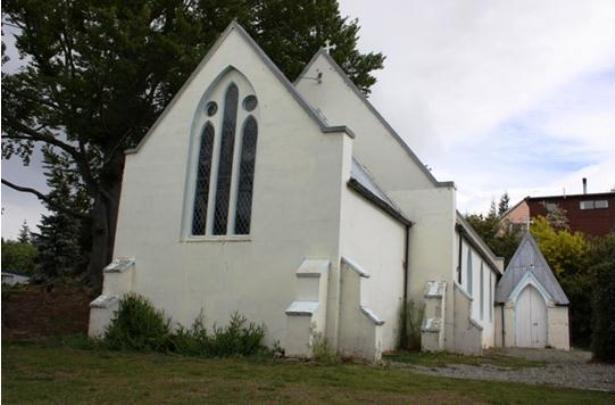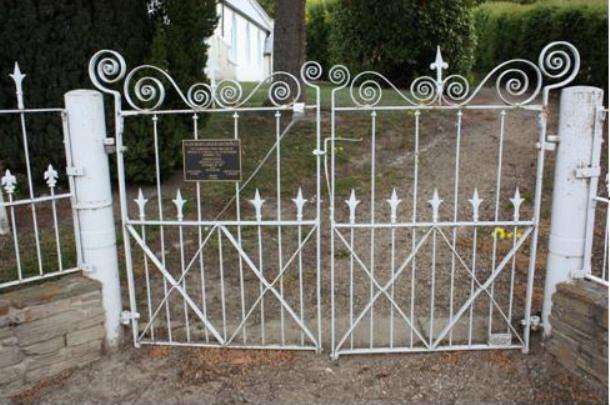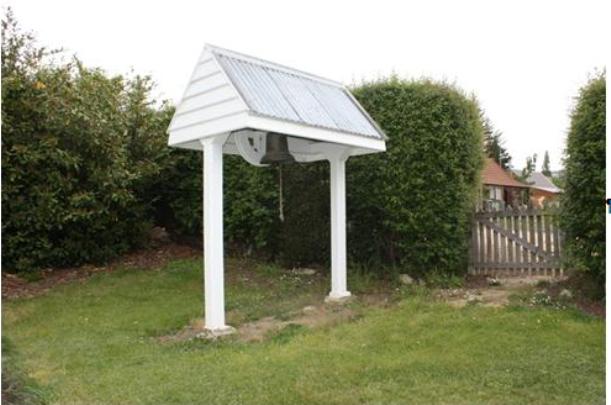The Anglican Church
The story of the Anglican Church in East Otago begins with Maori. Tamihana, the only surviving son of Te Rauparaha, was converted to Christianity and wished to spread the Word to Kaitahu who had been badly treated by his father. He set out to Otago in 1842 and was reportedly well received by local Maori. Many converts were made and when Bishop Selwyn visited in January 1874 four were baptised. Selwyn then visited Waikouaiti and visited many of the local English. Despite this early activity, it was several years before Anglican services were held in Waikouaiti.
Otago and Southland were unique from the rest of New Zealand as the only regions where the Church of England was not the major denomination. Anglicans made up forty per cent of the population nationwide in the colonial era but in Otago and Southland they represented only 25 percent. The south was the stronghold of Presbyterianism and this was even more so in rural areas. Some Otago Presbyterians called the Church of England ‘The Little Enemy’. Anglicans responded with the label ‘The Old Iniquity’.
Otago and Southland were incorporated in the Diocese of Christchurch from its inception. The advent of gold, however, brought such an influx of people into Otago that a new diocese was required. The Diocese of Dunedin was created in 1869, although the first bishop, Bishop Samuel Tarratt Nevill, did not arrive until 1871.
Naseby
The history of gold mining in Central Otago began with Gabriel Read’s discovery of gold in Gabriel’s Gully, near present-day Lawrence, in 1861. The following year Hartley and Reilly left this gully and travelled further into Central Otago. They spent the winter prospecting in the now-flooded Clutha Gorge between present day Clyde and Cromwell, finding enough gold in the area to travel back to Dunedin and lodge 87 pounds with the Gold Receiver. Gold was quickly discovered in other parts of the region, including places such as Hogburn (renamed Naseby in 1874).
There were an estimated 78 goldfields in Central Otago, boom towns sprung up to service the gold diggings, and disappeared just as quickly as the gold returns for the itinerant miners. Little remains of these places. Historian John Angus writes ‘[w]hen the miners decamped so too did the commercial section of many of the early towns. This pattern was repeated many times, often at remote locations in Central Otago. But some settlements remained, undergoing a sort of metamorphosis to become service centres for the subsequent stages of more stable mining.’
Towns developed haphazardly. Angus writes that gold mining towns were often an ‘incongruous jumble of handsome stone hotels and public buildings, ornate shop facades often masking bare corrugated iron sides, and ramshackle tin sheds.’ These were often ‘frontier towns’: ‘hotels, illicit sly-grog shops, gambling booths and what Europeans called the ‘opium dens’ of the Chinese. Over the towns there often remained an air of impermanence.’ Naseby was typical of impermanent impromptu development.
This haphazard development was particularly true for Hogburn. The site of the Mt Ida goldfields and the associated township was originally part of a depasturing license, Run 204, called the Sowburn. After the discovery of gold the Otago Provincial Council cancelled the license and proclaimed the Mt. Ida Goldfield. While the original canvas town was set up in the Hogburn Gully, when the official town of Naseby was surveyed it was situated at the mouth of the gully, about a kilometre from the original location. The nascent town was built largely of iron and canvas structures. The suggestion of a new location resulted in angry outbursts and a memorial signed by 350 miners and business people protesting the injustice of such a decision. Businessmen protested that their ability to carry on their trade was dependent on being located near the customers, and there were 150 storekeepers in the existing township, and only 40 allotments surveyed in for businesses in the new survey, let alone that the ground under the new town had not been worked and was likely to be auriferous. Despite objections the town was established in the new location.
The town of Naseby grew steadily with the fortunes of its gold miner population during the 1860s and 1870s. Even in these early years Naseby was seen as the quintessential goldfields town. A correspondent for the Timaru Herald wrote in 1874 that it was ‘one of best specimens, I should say, of a goldfield town; on all sides, in the streets themselves, round the very church which is perched up on a bit of ground only just preserved sacred from the pick and shovel, there are signs of the destructive miner. Acres of land turned over in all directions and the muddy waters of tailraces running down the main thoroughfares, present altogether a curious picture, not the less odd by the funny collection of the small sheet iron shanties which for the most part make up Naseby.’ There were eighteen public houses at this time.
The English Church in Naseby
Bishop Selwyn preached his first sermon in Naseby from in front of the billiard table at the Old Victorian Hotel with the service attended by people of many denominations. A public meeting was held in Naseby on 11 August 1873 presided over by Bishop Nevill. The people agreed that a church and manse would be built and a building fund was started, with 122 individuals agreeing to subscribe. Rev. E. Williams, though not yet in the country, was approached to be the minister on a salary of £300. The church women went to work and in 1874 raised the notable sum of £280 6s, indicating the enthusiasm of the community for establishing the parish and building a church.
The land on which the church was built was owned by warden Henry Wirgman Robinson (himself a lay reader of the church), with the title issued in August 1871. In 1874 the title was transferred to auctioneer Walter Inder, and miners William Newman and Reuben Rouse Hore, as trustees for St George’s Church.
The building of St George’s Church represents the period of development in the Anglican Church which saw the consolidation of communities and a steady building programme which saw many new churches constructed in small towns. This is the period described by historian H.T. Purchas as the ‘Macrocarpa’ period where small church buildings sprung up alongside towns where the church building itself grows dear to its community and the work of established religion, education, fund raising and outreach goes on. This was a period where church building accelerated for the Anglican Church throughout New Zealand, when urban centres grew and small centres consolidated. That the community came together, donated the land and organised the building of the church shows the importance of the church as an institution both historically and currently.
During Bishop Nevill’s episcopate twenty two new places of worship were opened, a strong period of growth in the Anglican Church. For the Anglican Church theologians of the Victorian period maintained that spirituality was the chief concern of the church and that ‘expression of this spirituality’ was an essential part of the services and of the church buildings. The timber vaulted ceilings, windows, altars and other decorative forms within the church were important expressions of the theology and practice of the time. These elements in St John’s, the carved pulpit, altar rails and other religious furniture are significant manifestations of the spiritual philosophy and practice of the Victorian and early Edwardian period. The decoration of exterior of the Church itself is restrained, with contrasting stone facings and the window details providing the focus.
The church was designed by Maniototo County engineer Richard Henry Browne (1843-1907). English born Browne, apprenticed under Alexander Gordon in London, arrived in Otago in 1863 and entered the office of the Dunedin city engineer. After three years service he worked for the Railway Department and then was appointed to the charge of the Mount Ida water race, the largest of its type in the country. At the same time he was also appointed district engineer by the Provincial Government of Otago, and later became engineer for the Maniototo County.
Browne’s choice of concrete is an interesting one, and perhaps reflects his engineering background. He was to use concrete foundations for a Bridge near Hyde built in 1879, and as an engineer it can be assumed that he was familiar with it as a construction material. The early use of concrete in Naseby was not as unusual as it might seem. The Otago Witness reports that the fever hospital at Naseby was built of concrete and completed by February 1875, though the contractor was not identified. The Naseby Gaol, also built of concrete, was completed in April 1876; again the contractor was not identified. It is commonly reported that contractor for the Church William Jacob, whose tender of £761 was successful, was said to have used ‘Jacob’s Mixture’, an allusion to an early tobacco blend, but used locally to refer to the mixture of clay and cement used for the church building, with perhaps a minimal amount of cement. Given Browne’s involvement, it would be interesting to know what cement mix he specified for the job, but this information has not been found.
The early use of concrete for a church is of special significance. Architect and historian Geoffrey Thornton in his book Cast in Concrete discusses history of concrete construction in New Zealand. The first church to be constructed in concrete was that built in Auckland for the Congregationalists (started 1874 and completed 1876), later known as St James Presbyterian Church designed by architect Philip Herapath (NZHPT Record No. 642, Category I), which is considered by Thornton to be a ‘remarkably early use of concrete for a place of worship.’ St James is a substantial and imposing neo-classically church in Grecian style, seating 420. St George’s in Naseby was completed before St James, making it the first concrete church in the country, though it is not mentioned in Thornton’s history.
Other more modest churches were built of concrete in the late 1870s. At Barrhill, the Church of St John the Evangelist was opened in 1877 (NZHPT Record No. 1765 Category II), part of a complex of buildings which included a number constructed of concrete built for John Cathcart Wason’s dream of a planned village. St Mary’s Church at Southbrook designed by C.G. and C.J. Chapman, and built in 1879 in Gothic revival style was another early example of a church constructed from concrete.
On 9 November 1874 the foundation stone was laid. The large piece of slate was a matter of pride, weighing 6 cwt, and was not the ‘Brummagem’ stone used in other public buildings, a reference perhaps to the cheap building materials used elsewhere. The school children shepherded by Rev. Williams and led by Bishop Nevill and the Masonic Brethren made their way to the church site. At the invitation of the Bishop, a Masonic ceremony followed, and records of the day, a list of church members, coins of the realm, copies of the Otago Daily Times and the Mt Ida Chronicle were placed in the cavity in the stone. Celebration ensued.
The opening date was to be 19 December 1875, but the official opening was delayed a week, and the church was formally opened on Boxing Day. William Jacob carved the religious furniture, including the much admired lectern, choir stalls, pews and other decorative pieces.
The Bishop consecrated the building. St George’s Church was one of the significant buildings in Naseby. A correspondent visiting the town in winter 1877 admired the ‘English Church’ as ‘undoubtedly far and away the best ecclesiastical building’ in Naseby, and went on to provide a description:
‘The Church is built of concrete, with open roof, lined with stained kauri, and is neatly fitted up; pews, pulpit, and altar-rails, &c., in kauri, and font in Oamaru stone. It is lighted by windows of white and colored glass, and seats 150 worshippers.’
The congregation were still without a permanent minister in March 1876. The locals lamented the difficulty of finding a suitable person given that the ‘salary is good, and the parsonage is the prettiest place in Naseby.’ The congregation was getting impatient with the well meaning lay reader, whose ‘unvarying, unsensational style of speaking destroyed to a considerable extent the effect which his sermons would have had.’
The title to the church was transferred to the Dunedin diocese in the mid 1880s. When the mortgage was discharged in December 1882, the property was transferred to Archibald Hill, Jack D’arcy Haggitt, Richard Leary, James Rattray, Henry Hardy, Edwin Spence and John Ritchit. The title was transferred to the Dunedin Diocesan Trust Board in July 1885, as the debts of the church were clear.
In 1905 St George’s was recognised as a prominent landmark, with the Cyclopedia of New Zealand’s entry noting that the building occupied a ‘prominent position’ and was part of a complex of church buildings which also included the adobe (sundried brick) Sunday School on the opposite side of Derwent Street. The minister, Rev. G.W. Christian, was important to the small communities in the Maniototo area, holding services at Kyeburn, Kyeburn Diggings, Hamilton, Waipiata, Hill’s Creek, St Bathans, and Cambrian.
A photograph of St George’s included in Janet Cowan’s 1948 book Down the Years in the Maniototo shows it as it was then. This image indicates that there was originally a gabled belfry on the rear gable end of the Nave. This belfry had a cruciform form in plan. The date the belfry was removed is not known.
The glebe of St George was subdivided in 1956, with the parsonage now on a separate title and no longer in church ownership.
In 2010 St George’s Church continues as a place of worship for the Anglican community in and around Naseby. Scheduled worship is every third Sunday of the month. The beauty and special character of the Church with its original religious furniture are recognised by the parish and by visitors to the town who are fortunate enough to make their way through the lancet doors into this welcoming and special Church.



